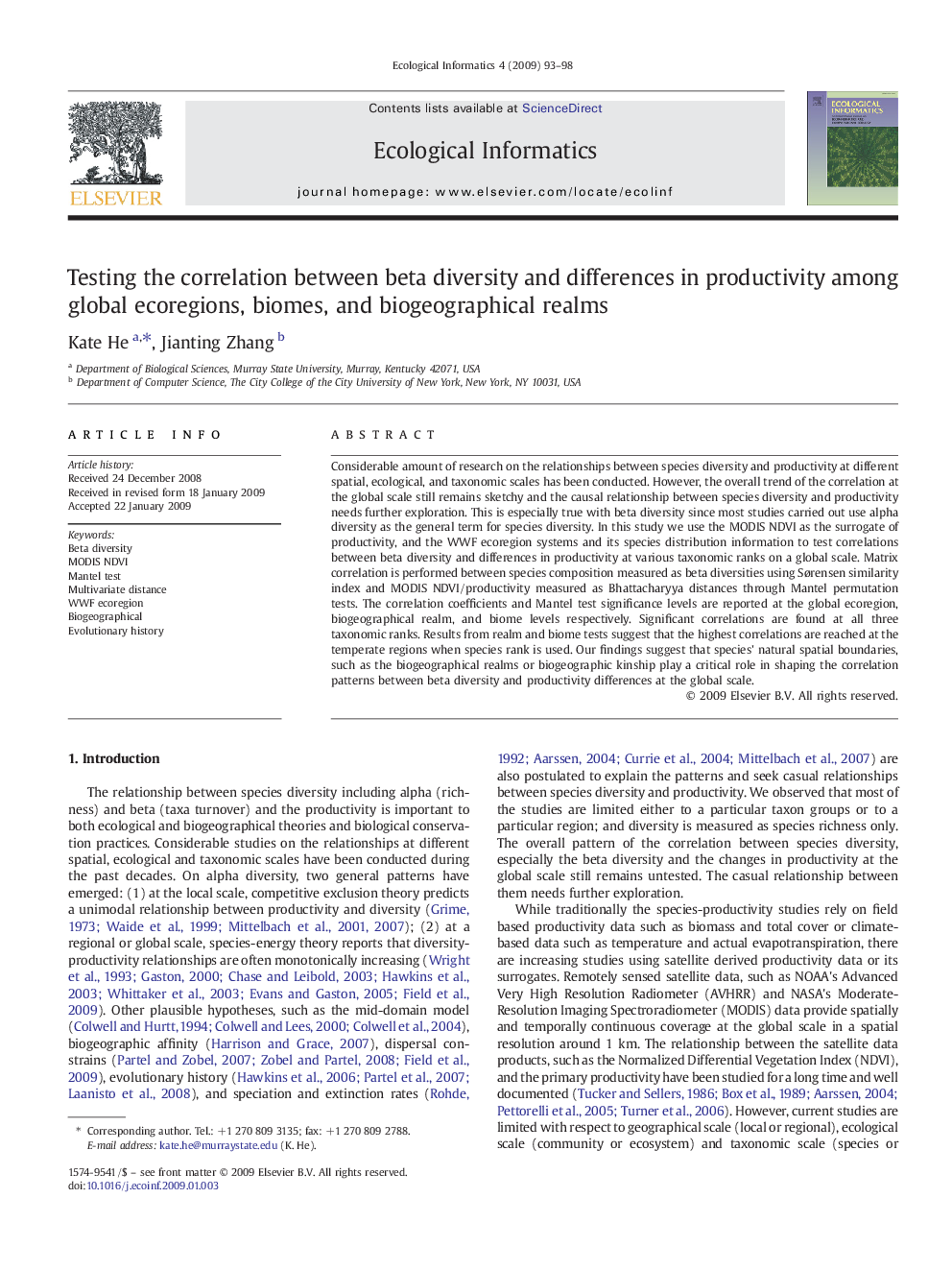| کد مقاله | کد نشریه | سال انتشار | مقاله انگلیسی | نسخه تمام متن |
|---|---|---|---|---|
| 4375218 | 1303251 | 2009 | 6 صفحه PDF | دانلود رایگان |

Considerable amount of research on the relationships between species diversity and productivity at different spatial, ecological, and taxonomic scales has been conducted. However, the overall trend of the correlation at the global scale still remains sketchy and the causal relationship between species diversity and productivity needs further exploration. This is especially true with beta diversity since most studies carried out use alpha diversity as the general term for species diversity. In this study we use the MODIS NDVI as the surrogate of productivity, and the WWF ecoregion systems and its species distribution information to test correlations between beta diversity and differences in productivity at various taxonomic ranks on a global scale. Matrix correlation is performed between species composition measured as beta diversities using Sørensen similarity index and MODIS NDVI/productivity measured as Bhattacharyya distances through Mantel permutation tests. The correlation coefficients and Mantel test significance levels are reported at the global ecoregion, biogeographical realm, and biome levels respectively. Significant correlations are found at all three taxonomic ranks. Results from realm and biome tests suggest that the highest correlations are reached at the temperate regions when species rank is used. Our findings suggest that species' natural spatial boundaries, such as the biogeographical realms or biogeographic kinship play a critical role in shaping the correlation patterns between beta diversity and productivity differences at the global scale.
Journal: Ecological Informatics - Volume 4, Issue 2, May 2009, Pages 93–98